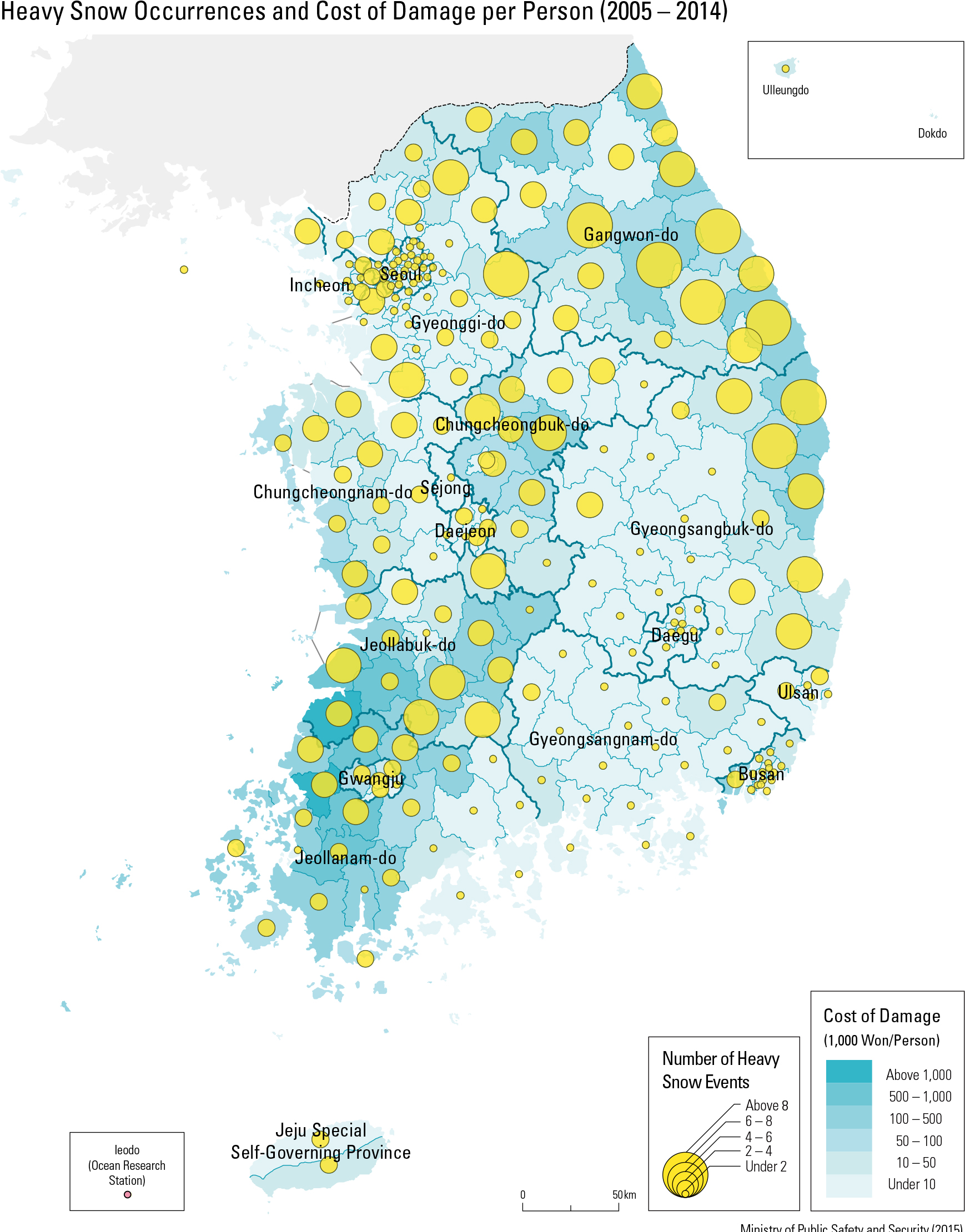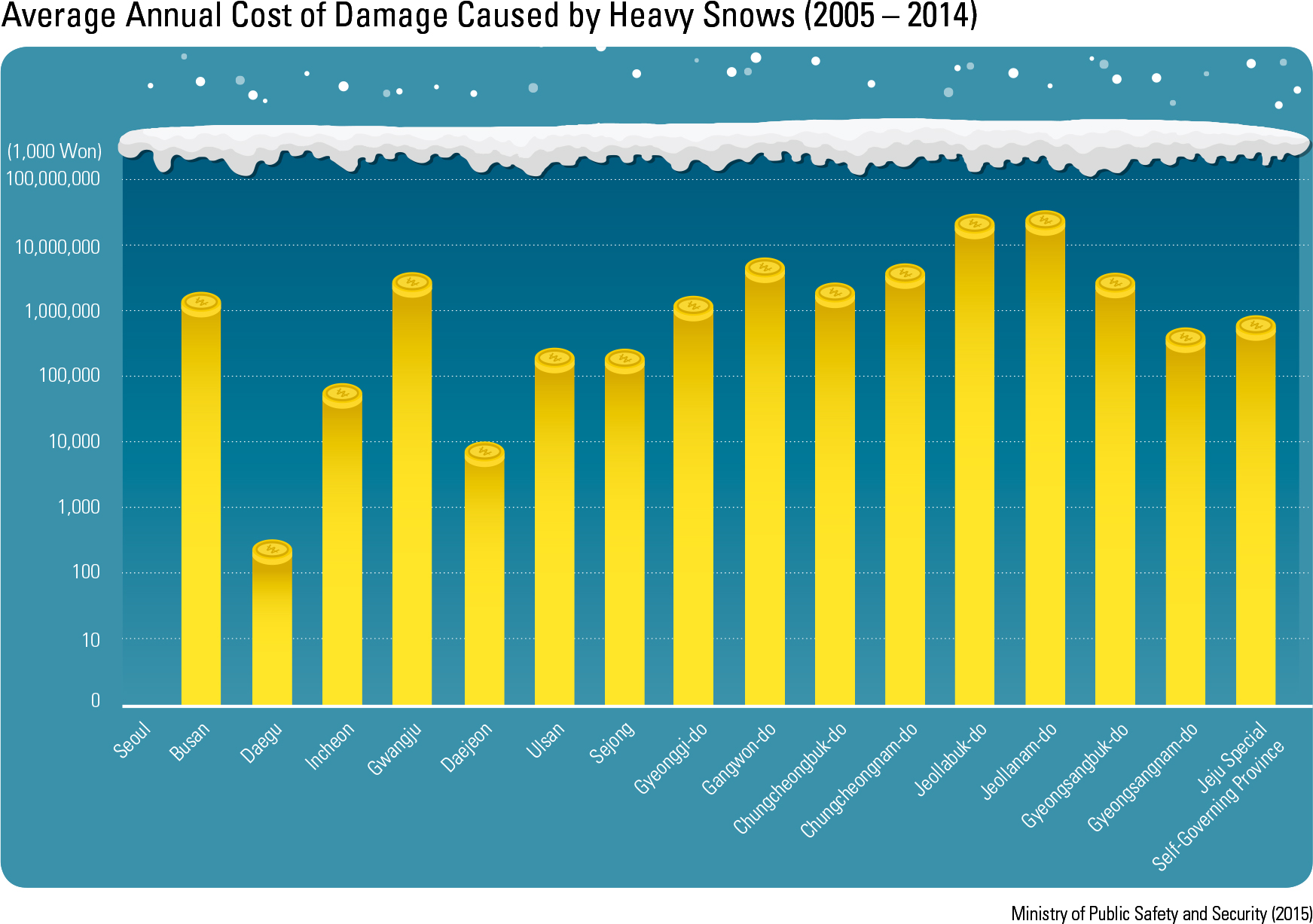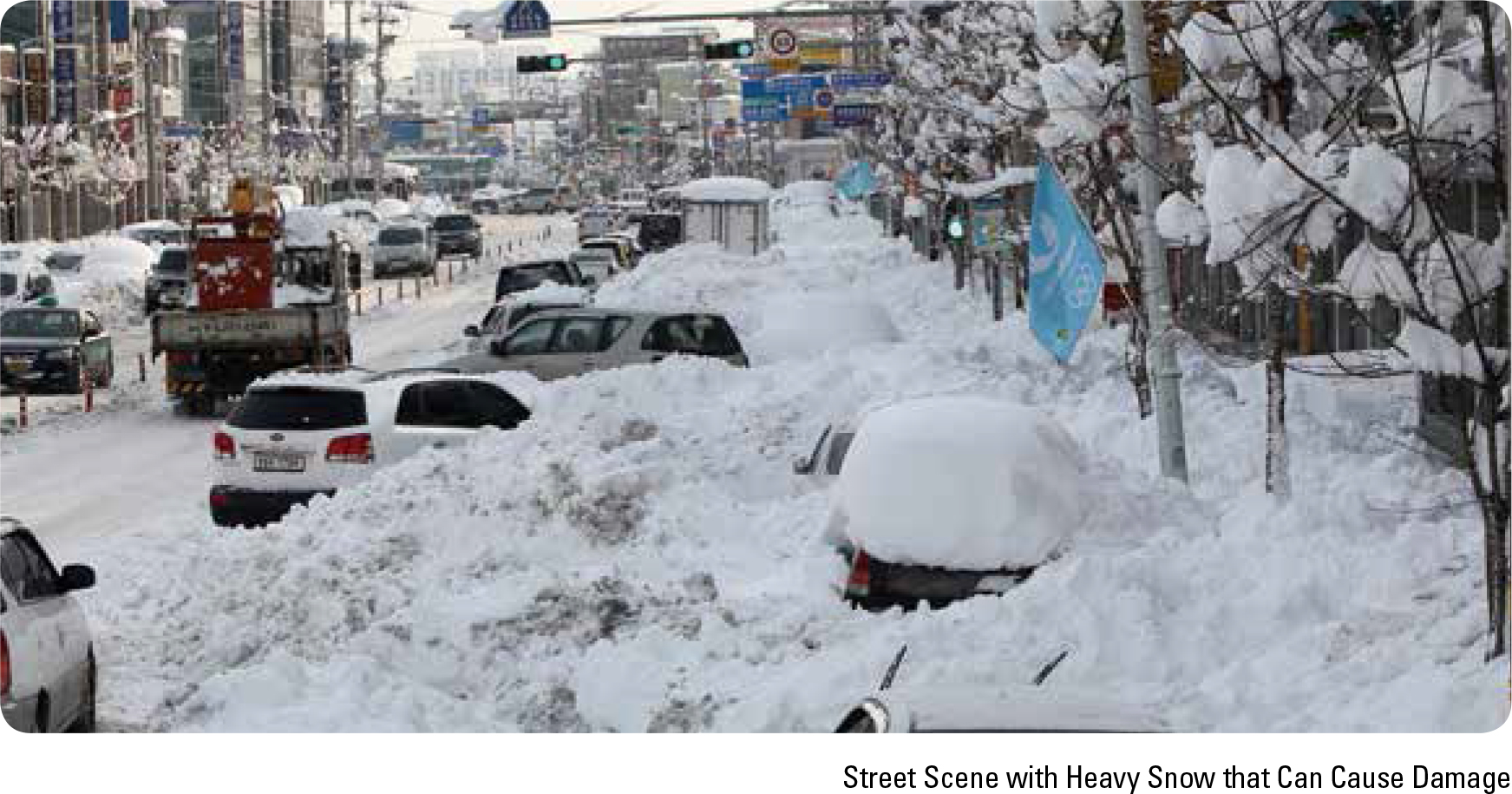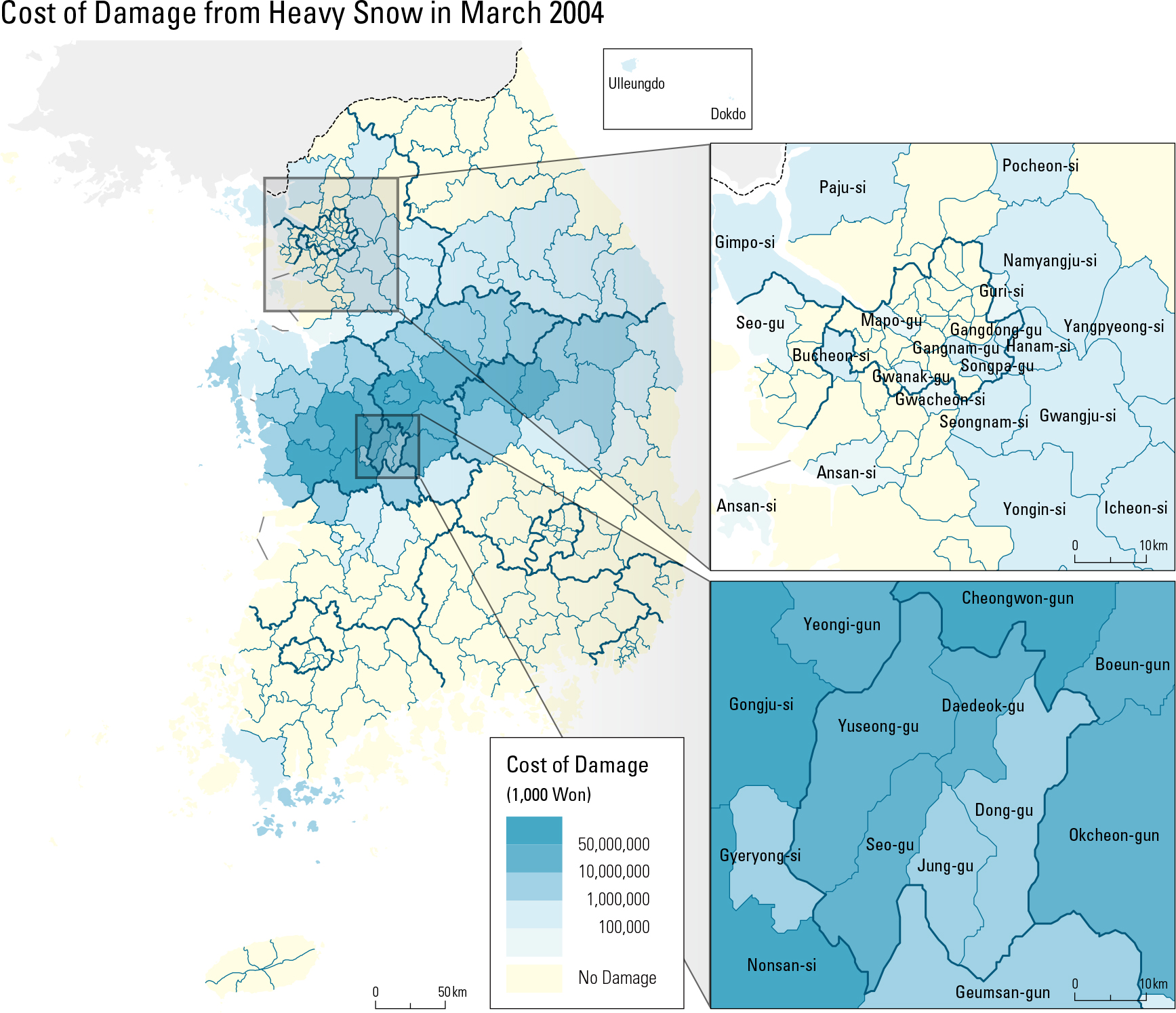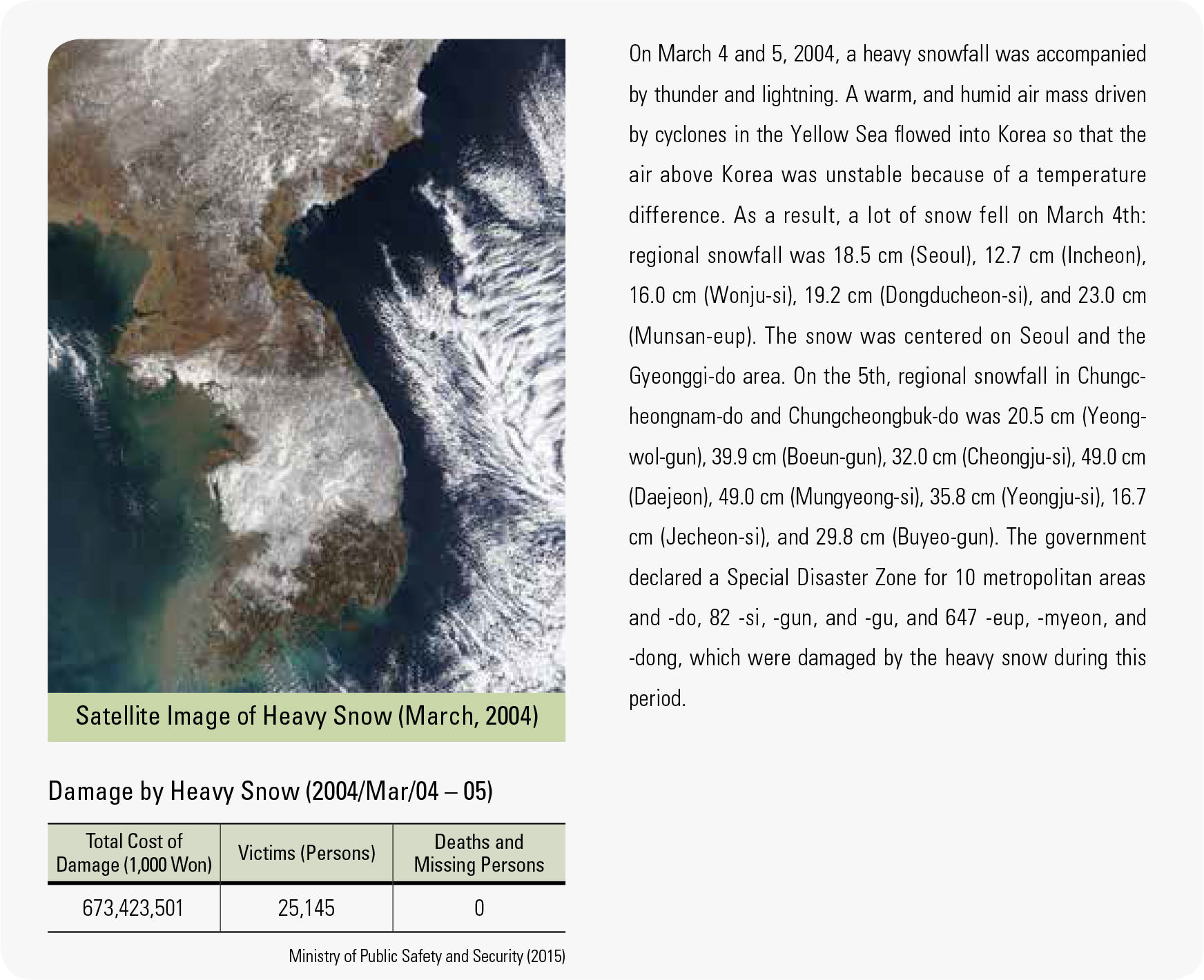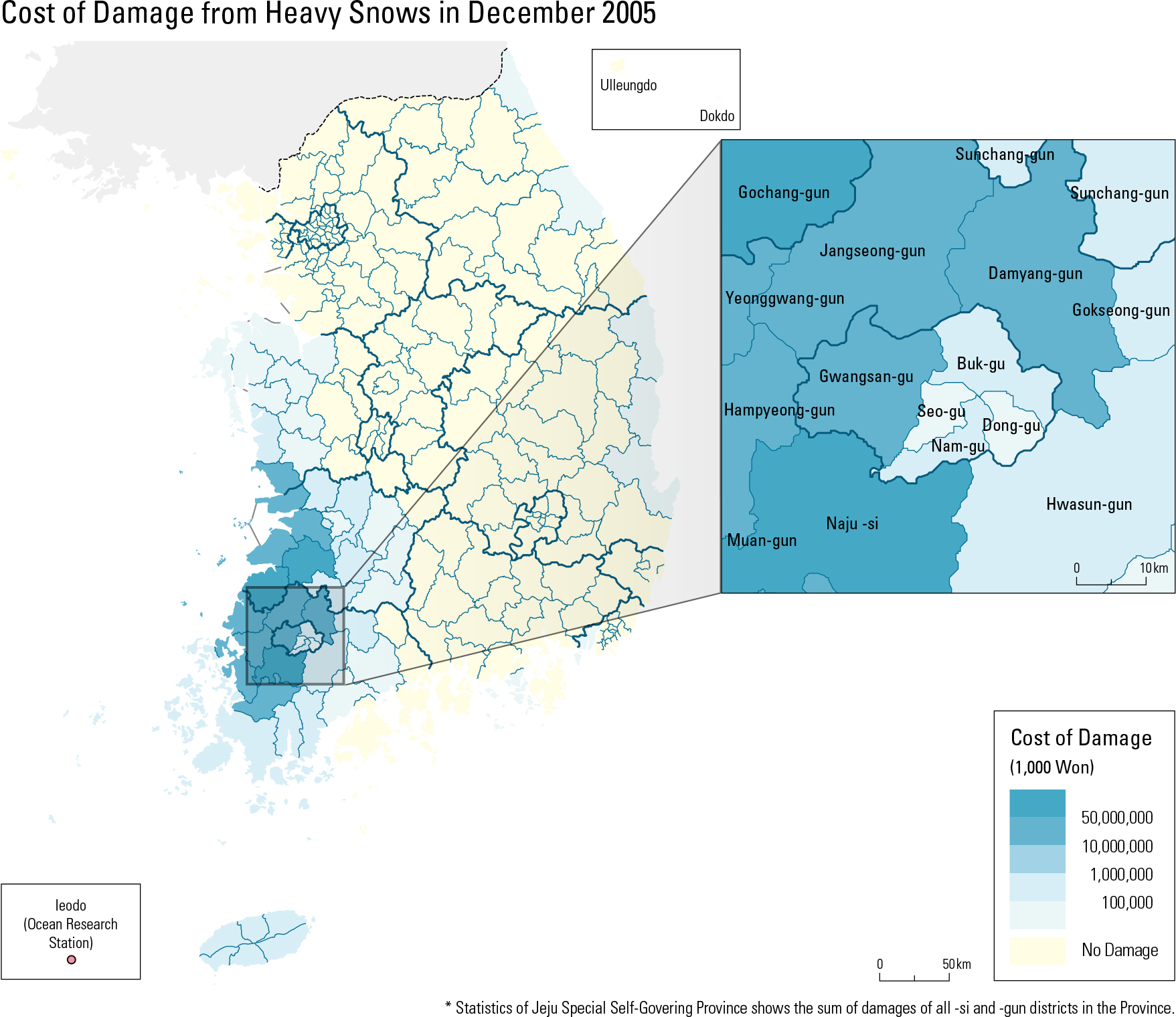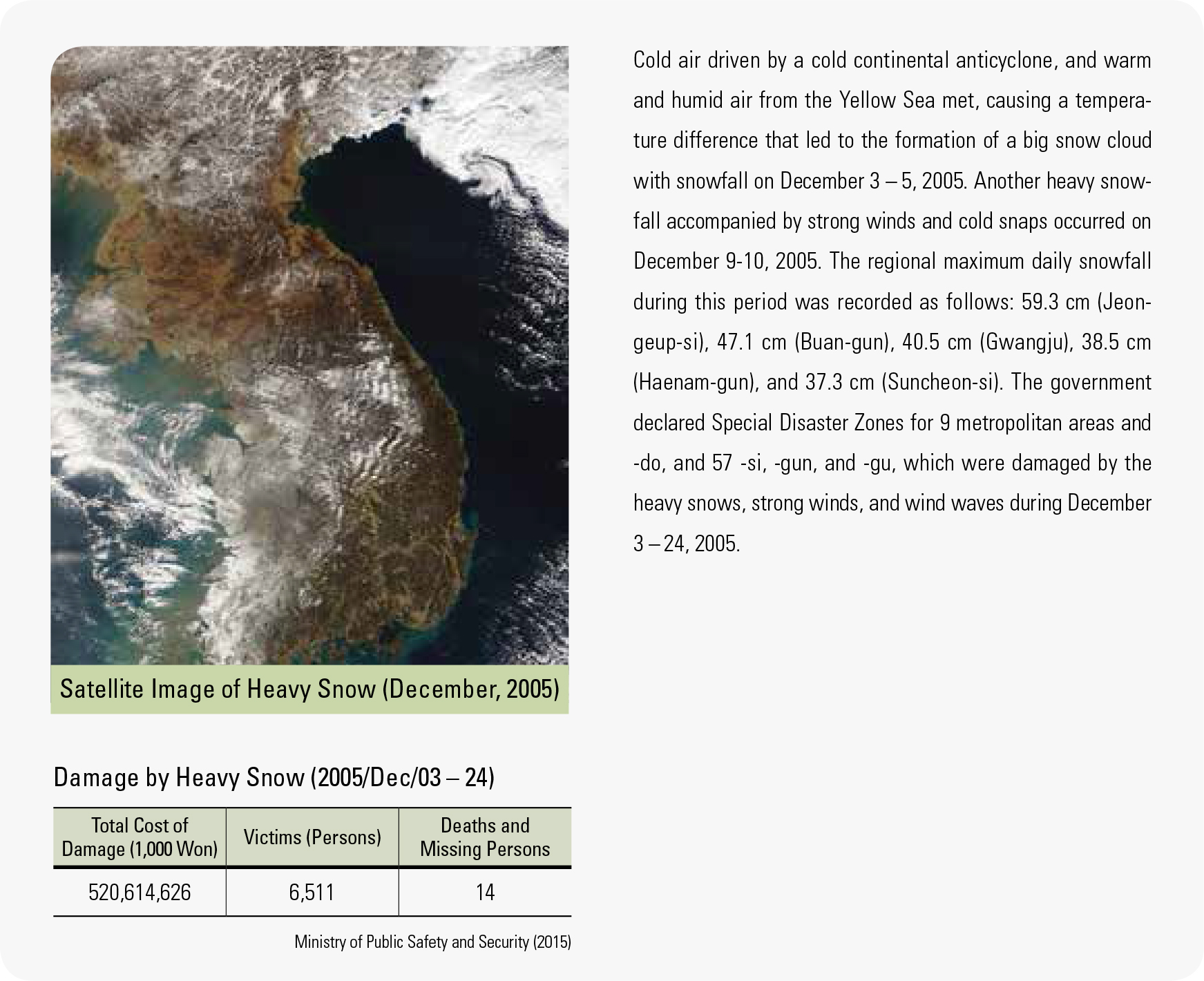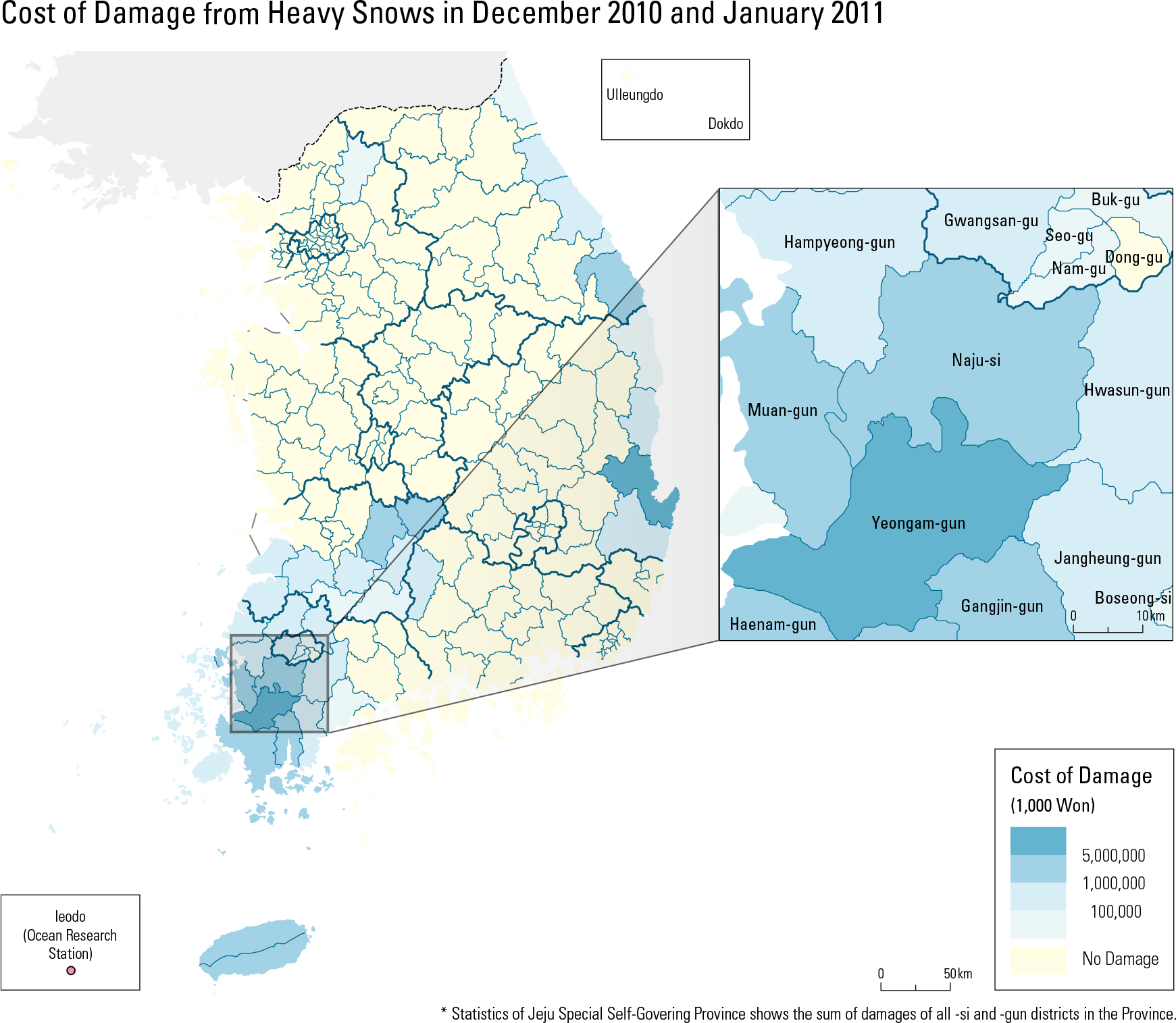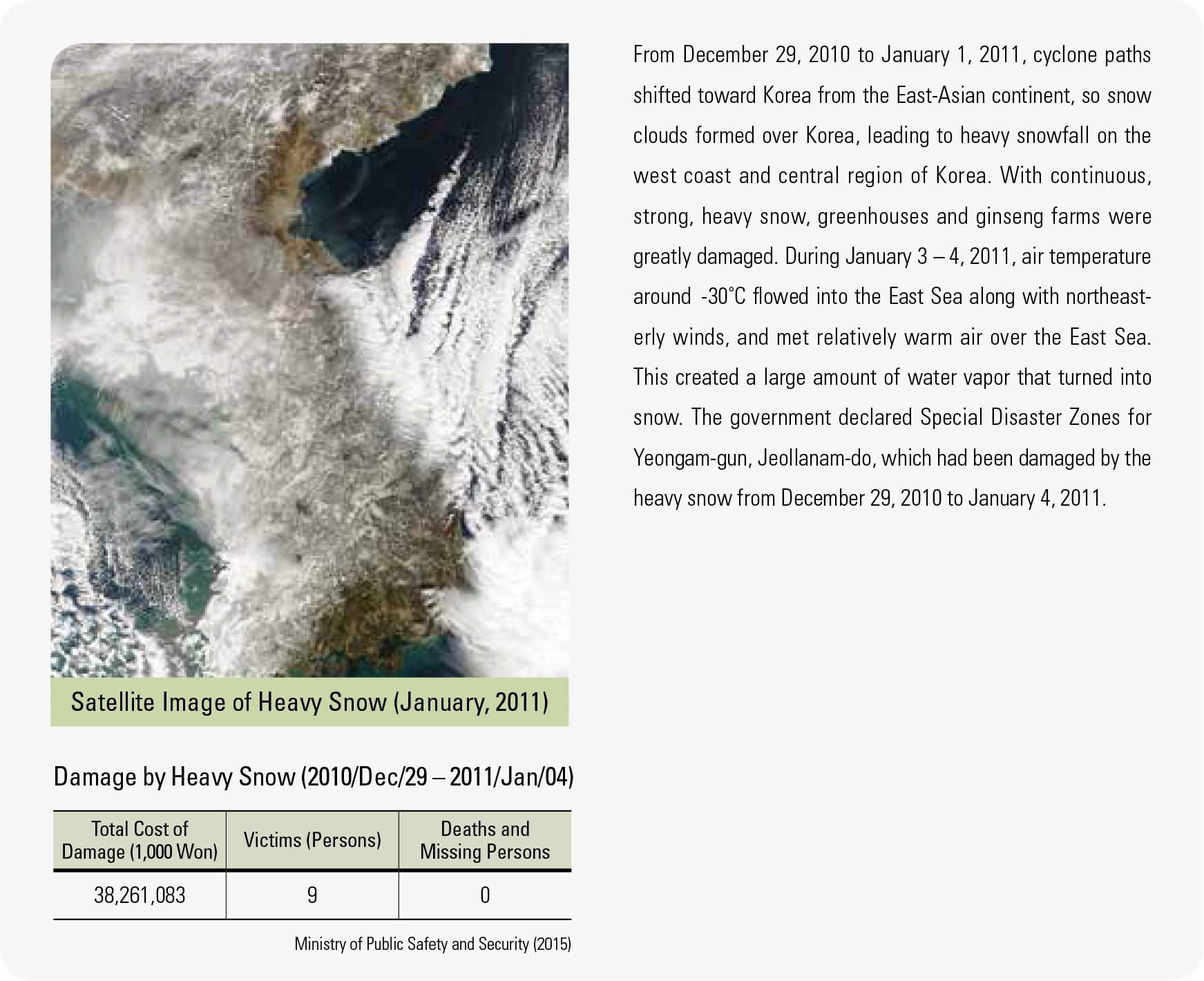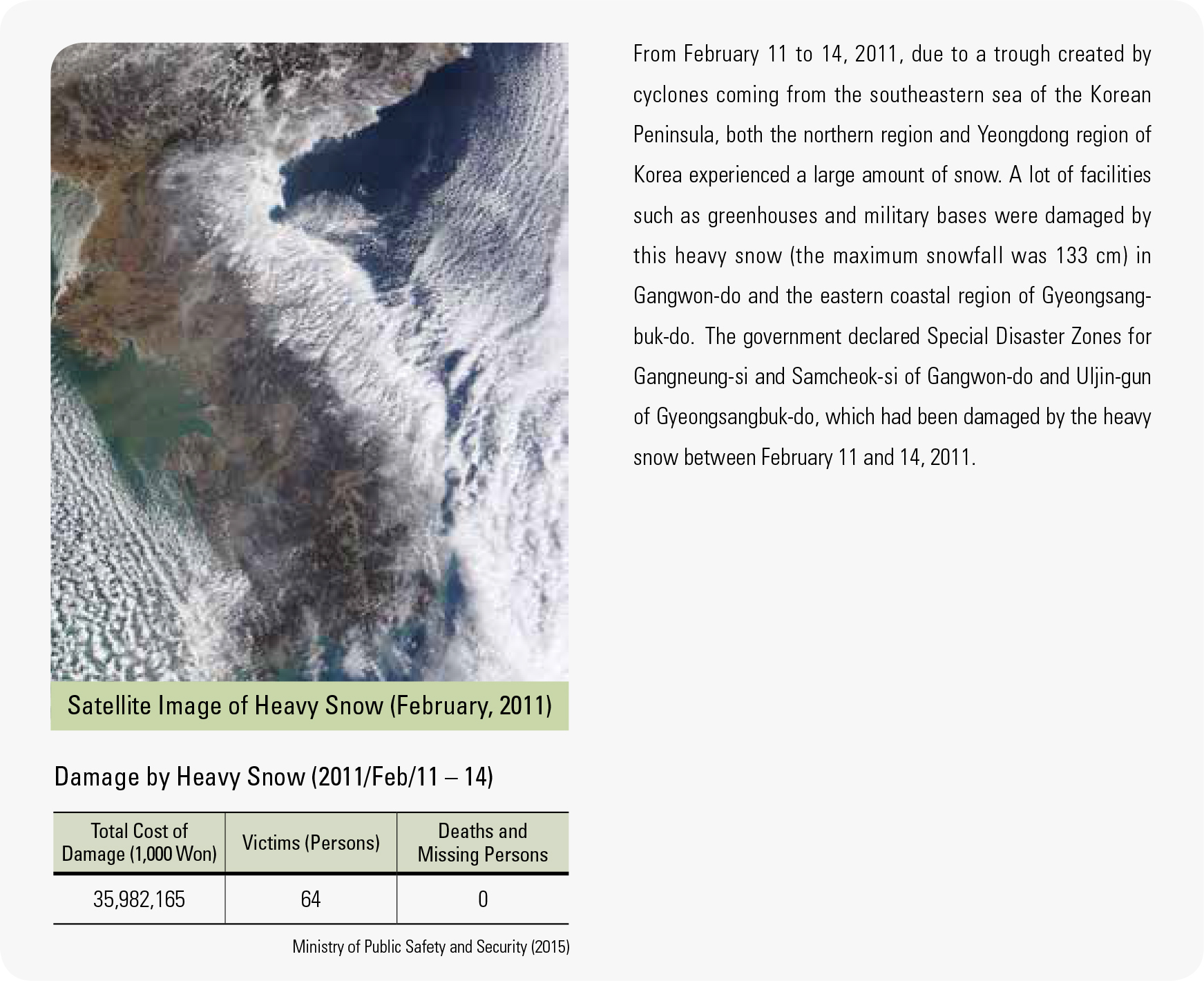English II
Heavy snowfall is de ned, based on spatial and temporal conditions, as an intense snow event in which a large amount of snow falls. According to the Korea Meteorological Administration, a heavy snow advisory is issued when fresh snow cover is expected to accumulate to 5 cm within 24 hours. A heavy snow warning is issued when fresh snow cover is expected to accumulate to 20 cm within 24 hours. In the mountainous areas, a warning is issued when snow accumulation is expected to be 30 cm or greater. According to records of snowy days over the period of 1974 – 2001, the yearly average number of heavy snowfalls is 2 – 3 times in the coastal regions of Gangwon-do and 7 – 8 times in the mountainous regions of Gangwon-do. Heavy snowfalls exceeding 50 cm occur about once a year. More than half of these heavy snow- falls were recorded in the mountainous areas such as Daegwallyeong. The distribution of atmospheric pressures across Korea and surrounding areas determines the spatial patterns of heavy snowfalls. When isobars run north to south, and a northwest mon- soon wind is strong as a high pressure system resides in the west, and low pressure resides in the east of the Korean Peninsula, heavy snowfalls often occur in the coastal regions of Chungc- heongnam-do, Jeollanam-do, and Jeollabuk-do, and in the mountain regions of Jejudo and Ul- leungdo. Heavy snowfalls often occur on the east coast of the Korean Peninsula when isobars run east to west, and a northeasterly is dominant as a high pressure system resides in the north, and low pressure resides in the south of the Korean Peninsula. If troughs form in a north-south direc- tion and cyclones move through slowly, snow can occasionally fall in the central regions of Korea. In this case, if temperature is quite low, snow can fall in the southern part of Korea.
page_2 |
